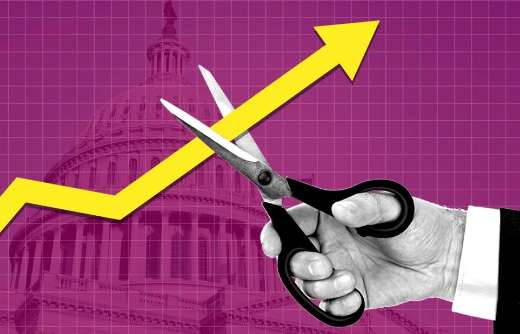Rate Cut In September Is Looking More Possible, As Fed Officials Are Dropping Strongest Hints Yet
On Wednesday, San Francisco Fed President Mary Daly explicitly stated that policy adjustments may be needed in the "coming months" to prevent further deterioration in the labor market. The same day, F

On Wednesday, San Francisco Fed President Mary Daly explicitly stated that policy adjustments may be needed in the "coming months" to prevent further deterioration in the labor market. The same day, Fed Governor Lisa Cook and Minneapolis Fed President Neel Kashkari echoed similar sentiments, suggesting that weak employment data is shifting the policy balance within the Fed.
The remarks from the three Fed officials reflected heightened concerns over the latest signs of weakness in the U.S. labor market, significantly bolstering market expectations for a rate cut as early as September.
Earlier, Wall Street News reported that Fed Governor Cook and Minneapolis Fed President Kashkari had voiced concerns that softening jobs data was tilting the Fed's internal policy stance.
These comments were a direct response to last week's nonfarm payrolls report, which showed U.S. job growth in July fell far short of expectations, with prior months' data revised sharply downward and the unemployment rate ticking higher. Fed Governor Cook described the downward revisions as typical of an economic "inflection point," further fueling speculation about rate cuts.
Following these remarks, investors rapidly increased bets on a Fed rate cut at the September meeting. At its late-July meeting, the FOMC had opted to hold rates steady, but the latest dovish signals suggest a potential major shift in policy direction at the next meeting.
Dovish Signals Intensify
The statements from the three Fed officials on Wednesday provided the clearest signals yet of an impending policy pivot.
San Francisco Fed President Mary Daly, in prepared remarks for an event in Alaska, said: "The labor market has softened. And I would see additional slowing as unwelcome, especially since we know that once the labor market stumbles, it tends to fall quickly and hard," She added: "All this means that we will likely need to adjust policy in the coming months."
A day before, Minneapolis Fed President Neel Kashkari expressed similar worries in a media interview, noting that the economy is slowing. Kashkari stated: “In the near term, it may become appropriate to start adjusting the federal funds rate.”
He also reiterated expectations for two rate cuts by the end of 2025.
Fed Governor Lisa Cook offered a deeper interpretation of the data, pointing out: "There were two major revisions to May and June, and these revisions are somewhat typical of turning points, which again speak to uncertainty."
This remark suggests policymakers are preparing for a potential turning point in the economy.
Balancing Policy Shifts Against Inflation Risks
Despite increasingly clear signals of rate cuts, the officials' comments also revealed the Fed's cautious balancing act between its dual mandate of controlling inflation and achieving full employment.
Mary Daly framed potential rate adjustments as a "recalibration" to better align policy with the risks to both inflation and employment, which she currently views as "roughly balanced."
Still, Daly emphasized that more work remains to fully bring inflation down to the 2% target.
She also noted that tariffs could push prices higher in the short term, but their impact may not be persistent enough to warrant a policy response from the central bank.
Earlier this week, Daly had suggested that two rate cuts this year might be appropriate, while leaving the door open for even more aggressive easing if needed.
Disclaimer: The views in this article are from the original Creator and do not represent the views or position of Hawk Insight. The content of the article is for reference, communication and learning only, and does not constitute investment advice. If it involves copyright issues, please contact us for deletion.